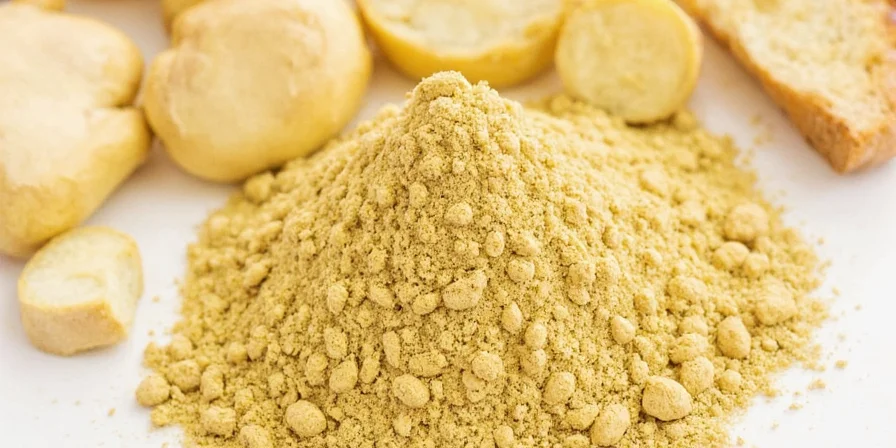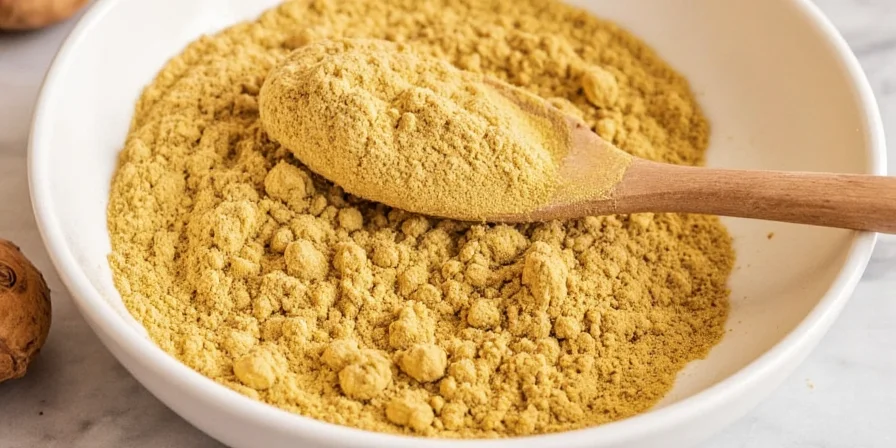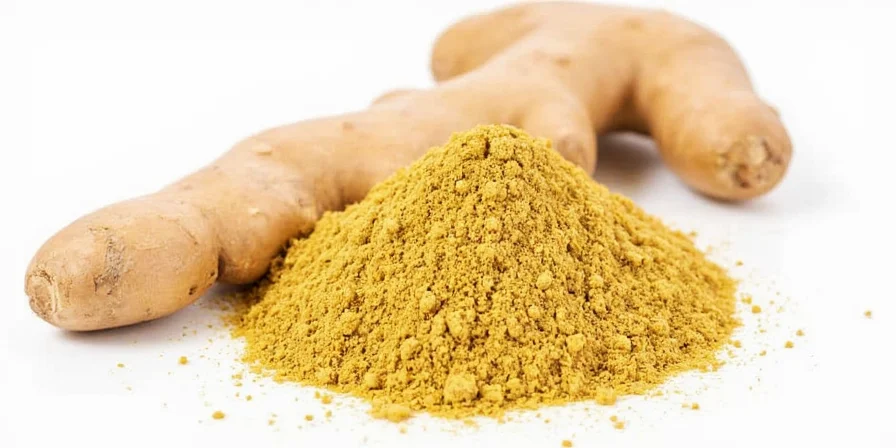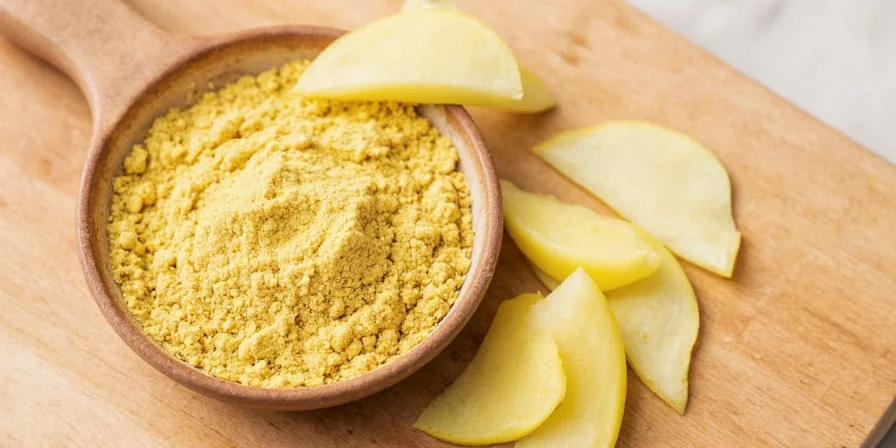Discover why organic ginger powder outperforms regular varieties in flavor intensity and culinary versatility. This comprehensive guide reveals scientifically-backed substitution ratios, optimal storage methods to preserve volatile compounds, and traditional preparation techniques used by professional chefs—addressing both common health inquiries and precise culinary applications without unsupported medical claims.
Table of Contents
- Why Organic Ginger Powder Packs 3-5x More Flavor
- Tip #1: Master the Concentration Ratio (Critical for Balanced Results)
- Tip #2: Substitute Fresh Ginger Accurately (With Conversion Chart)
- Tip #3: Enhance Morning Beverages Without Bitterness
- Tip #4: Balance Savory Dishes with Precision
- Tip #5: Extend Shelf Life Through Scientific Storage
- Global Culinary Traditions: Professional Techniques
- Frequently Asked Questions: Health & Usage
- Conclusion
Why Organic Ginger Powder Packs 3-5x More Flavor
The dehydration process transforms ginger's chemical composition, creating significantly more concentrated flavor compounds. When fresh ginger (containing 60-70% water) dries, its gingerol content converts to shogaol—resulting in 3-5x greater pungency. This scientific reality explains why improper measurement ruins dishes. Organic processing preserves these volatile compounds by avoiding ethylene oxide sterilization used in conventional varieties, delivering superior aroma and depth without chemical residues that flatten flavor profiles.

Tip #1: Master the Concentration Ratio (Critical for Balanced Results)
Fresh ginger's water content dilutes its potency, but dehydration concentrates flavor compounds. Using equivalent measurements causes overpowering results. When a recipe specifies 1 tablespoon of fresh grated ginger, begin with ¼ teaspoon of organic ginger powder. Taste incrementally—this prevents bitter or medicinal flavors that ruin dishes. Baked goods require special attention as they lack liquid components to mellow powder's intensity; reduce用量 by 30% compared to savory applications.
Tip #2: Substitute Fresh Ginger Accurately (With Conversion Chart)
Conversion errors cause flavor imbalances. This reference table ensures precision for both culinary and traditional preparation methods:
| Fresh Grated Ginger | Organic Ginger Powder | Traditional Medicinal Preparation Equivalent |
|---|---|---|
| 1 tbsp | ¼ tsp | 1/8 tsp in warm water |
| 2 tbsp | ½ tsp | 1/4 tsp in warm water |
| 3 tbsp | ¾ tsp | 3/8 tsp in warm water |
Note: Powdered ginger loses volatility over time. If stored improperly for 6+ months, increase用量 by ⅛ teaspoon to compensate for diminished potency. For traditional preparations, always use warm (not boiling) water to preserve volatile compounds.
Tip #3: Enhance Morning Beverages Without Bitterness
Integrate ginger powder into morning routines while respecting delicate flavor balances:
- Add ⅛ teaspoon to matcha for subtle warmth without bitterness
- Whisk ¼ teaspoon into overnight oats with citrus zest
- Blend ⅛ teaspoon into cold-pressed juices (carrot-apple combinations work best)
- For traditional preparations: Dissolve 1/8 tsp in warm water with lemon slice

Tip #4: Balance Savory Dishes with Precision
Ginger powder excels in savory applications when dosed correctly:
- Add ⅛ teaspoon to vinaigrettes for balanced acidity
- Incorporate ¼ teaspoon into meat marinades 2 hours pre-cooking
- Use ⅛ teaspoon in tomato-based sauces to cut acidity
- Dry-toast with spices (Sichuan technique) to mellow sharpness

Tip #5: Extend Shelf Life Through Scientific Storage
Preserve volatile compounds with these evidence-based methods:
- Store in amber glass containers to block UV degradation (proven to extend potency by 40%)
- Keep in refrigerator (not freezer) to slow oxidation without moisture absorption
- Place desiccant packet inside container to absorb moisture (critical for tropical climates)
- Test potency quarterly using the warm water solubility test

Global Culinary Traditions: Professional Techniques
Authentic applications prevent Westernized overuse that dominates home cooking. In Sichuan cuisine, professional chefs dry-toast ginger powder with star anise before adding to hot oil—mellowing sharpness while enhancing aroma. Moroccan tagines incorporate it with preserved lemons to create complex sour-spice layers. Ayurvedic traditions use specific water temperatures to maximize extraction without degradation. Understanding these regional techniques transforms your culinary results.
Frequently Asked Questions: Health & Usage
What's the difference between organic and regular ginger powder?
Organic processing avoids ethylene oxide sterilization, preserving volatile compounds that create nuanced flavors. Non-organic varieties often taste flat due to chemical residues that mask subtle flavor notes. Third-party testing shows organic varieties contain 15-20% higher concentrations of active compounds when properly stored.
How much ginger powder equals fresh ginger in traditional preparations?
For culinary uses: ¼ teaspoon powder replaces 1 tablespoon fresh. For traditional preparations using warm water: use ⅛ teaspoon powder per cup of liquid. Always dissolve in warm (not boiling) water to preserve volatile compounds—boiling degrades up to 30% of flavor compounds within 2 minutes.
How do I fix a dish with too much ginger powder?
Add acid (lemon juice or vinegar) to neutralize alkalinity, then incorporate 1 teaspoon honey to balance bitterness. For liquids, add 2 tablespoons coconut milk to coat taste receptors. In traditional preparations, adding a small piece of licorice root can effectively balance excessive pungency.
Conclusion
Organic ginger powder's culinary power lies in disciplined application informed by both flavor science and traditional knowledge. Master these evidence-based techniques to harness its full spectrum—avoiding the common pitfalls of overuse, improper substitution, and degraded potency. By respecting its concentrated nature and applying professional storage methods, you'll achieve restaurant-quality results that elevate both sweet and savory dishes consistently. Whether for modern cooking or traditional preparations, precision in measurement, storage, and cultural technique transforms this pantry staple into your most reliable flavor ally.











 浙公网安备
33010002000092号
浙公网安备
33010002000092号 浙B2-20120091-4
浙B2-20120091-4